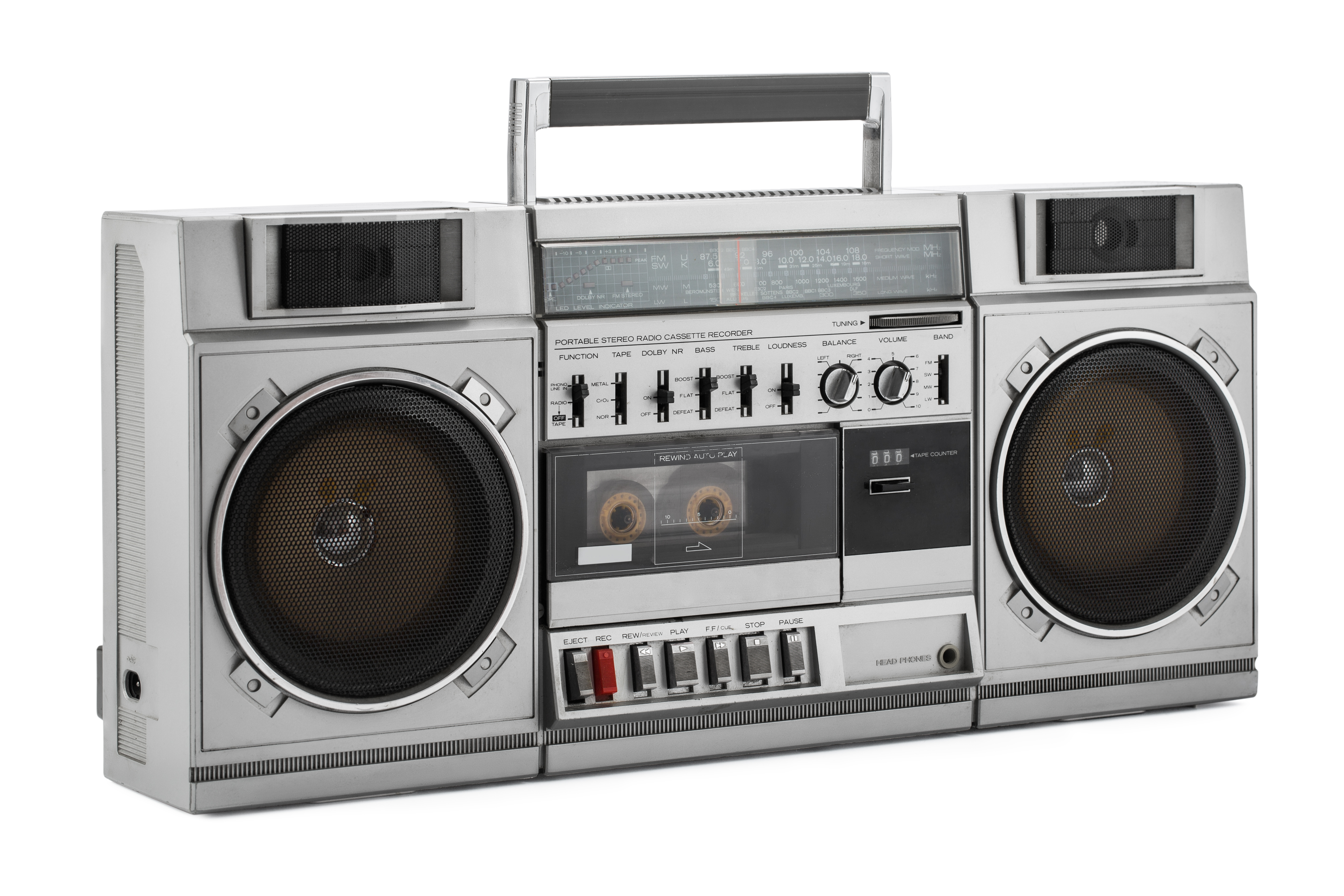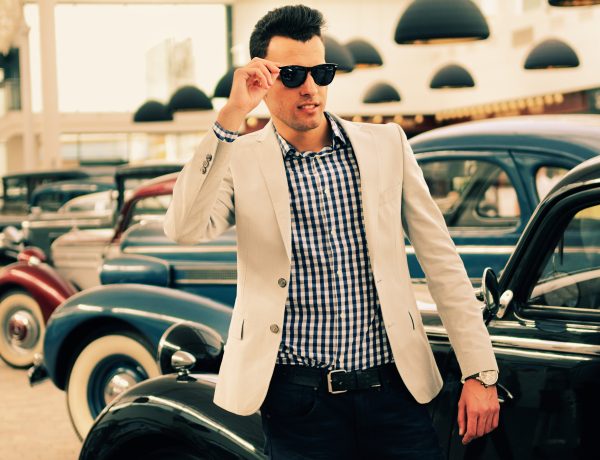Born in New York City, hip-hop began as a 1970s subculture celebrating music and dance among Black youths. A force of camaraderie, creativity, and self-expression, hip-hop pioneered innovative new styles that proliferated across the country. Over the course of the past five decades, hip-hop music grew from a fringe subculture to a prominent voice in pop culture. Its lasting impact on the industry is especially evident in streetwear, the most pervasive trickle-up macrotrend to date. Hip-hop has become an influential role in contemporary fashion, inspiring novel trends, generating commercial viability for partner brands, and giving rise to the streetwear market as we know it today.
For his Spring/ Summer ‘17 runway show, Balenciaga’s Demna Gvasalia sent his models down the runway in oversized windbreakers with BALENCIAGA splashed across their chests. Color-block, volume, logo-mania, androgyny— the collection embodied the streetwear-centric zeitgeist of the decade while also paying homage to the ethos of the 1980s. Formerly Vetements’ Creative Director, Gvasalia’s debut at Balenciaga sparked the brand’s transformation into a streetwear giant. As The New York Times’ Vanessa Friedman noted, “The extreme, almost antifashion streetwear aesthetic of Vetements might seem the opposite of the historically elitist Balenciaga.”
Balenciaga’s drastic transformation was far from an anomaly in the fashion industry; in fact, it seems that streetwear is one of the most pervasive macro-trends on the runway, only trickling farther up into the luxury sector each season. It has given rise to numerous subcultures, such as hypebeasts and sneakerheads, and in turn, an unprecedented number of new second-hand resale vendors dedicated solely to streetwear.
However, what is often unrecognized and appropriated are the historical and cultural roots of streetwear: this $300 billion industry is indebted to hip-hop, a sub-cultural movement pioneered by Black youth in the 1970s. In Sacha Jenkins’ Fresh Dressed, a 2015 documentary on hip-hop fashion, she stated that “Fashion has always been an important part of the hip-hop identity because fashion has always been an important part of Black identity in America… Because when you don’t have much ownership over where you can land in society, your financial situation, your educational situation, the one thing you can control is the way you look.”
Hip-hop fashion first emerged in New York City in the 1970s as a visual counterpart to rap music. Caribbean and African-American teens in disenfranchised parts of the city created a sense of unity by hosting block parties, where they danced to funk and soul, utilizing turntables to extend the dance break. They began to add instruments and elements of different songs to the breakbeat, generating new music and forming the foundations of hip-hop music. In addition to breakdancing, they began MCing during these dance breaks to encourage each other to dance, which quickly grew into DJing and what is known as rapping today. In 1978, rappers coined the term “hip-hop” to refer to the movements exhibited by the dancers during raps.
As hip-hop developed into a prominent fringe culture among Black youths, they transposed the music into a larger cultural phenomenon, which was especially manifested in their attire. From the get-go, dress was a crucial component to their performances, as each rapper would compete to dress better than the last. 1970s NYC photographers such as Henry Chalfant and Ricky Flores captured staples of these nascent days of streetwear as they proliferated across the city and eventually the East Coast: baggy jeans, oversized t-shirts, baseball caps, and chunky sneakers.
As breakdancing became increasingly physical in the 1980s, rappers and dancers established four main moves: toprock, downrock, power moves, and freezes. Known as b-boys and b-girls, the dancers would wear Adidas track suits and Puma or Adidas superstar sneakers to accommodate their acrobatic movements. Athletic labels— most notably Nike, PUMA, Reebok, Adidas, and FILA— became a motif of hip-hop fashion. The increasingly prevalent b-boy community propagated streetwear as a lifestyle, galvanizing sportswear into a fashion trend for the first time. By the end of the decade, hip-hop fashion had become a force of unity, self-expression, and solidarity among Black teens.
The 1980s catalyzed an unprecedented wave of hip-hop music production, which, in turn, increased the commercial viability of hip-hop fashion. In 1982, Wild Style, a film about a South Bronx graffiti artist who paints the backdrop for a rap concert, also helped increase the visibility of hip-hop culture across the nation. In response, sportswear brands, who had long been central to hip-hop culture, quickly began to capitalize upon the marketing potential of hip-hop artists.
For instance, in 1986, hip-hop group Run-D.M.C. performed their hit single “My Adidas” at Madison Square Garden and encouraged the audience to hold their Adidas in the air. After a sea of Adidas superstars shot into the air, the sneaker brand invested in a 1 million dollar endorsement deal for the group, which included a custom sneaker line. After Adidas’ endorsement deal, a slew of other mainstream sportswear brands invested in collaborations with hip-hop groups as well. As Glenn Collins remarked in The New York Times in 1988, “Hip-hop’s influence on advertising is unmistakable. A print ad in Reebok’s new $35 million campaign shows 20-, 30- and 40-year-old whites dancing on a graffiti-bedaubed, hip-hoppy city street. A New Way of Writing It and other Reebok ads, adopting the orthography of rap hits like M. C. Lyte’s ”I Cram 2 Understand U (Sam),” proclaim: ”Reeboks Let U.B.U.” By the end of the decade, hip-hop music had become a powerful outreach tool in the sportswear industry.
The early 90s gave rise to the inception of independent streetwear labels. Renowned graffiti artists such as KAWS began selling their paintings on t-shirts rather than canvases, while Rappers such as Puff Daddy founded their own apparel lines rather than collaborating with mass retailers. Brands such as the North Face and Timberland struggled to keep up, incorporating a hip-hop-inspired aesthetic into their new collections.
At the same time, as hip-hop boomed in the music industry, artists began to turn towards luxury consumption, in part as a status symbol and in part to disrupt fashion’s racial status quo. Some of the first designer labels rappers incorporated into their wardrobe were Ralph Lauren and Tommy Hilfiger, as they had been traditionally marketed towards an upper-class, white demographic. Though luxury fashion and hip-hop remained separate since the genre’s inception, rappers’ increasingly flashy logos dismantled racial stereotypes associated with high fashion and catalyzed the first wave of logo-mania in fashion. Their evolving aesthetic received criticism for departing from the authentic origins of hip-hop, but the burgeoning power of rap stars in fashion was undeniable. In Annie Leibovitz’ seminal spread in Vogue, Puffy Takes Paris, in October 1999, the rapper is lavishly styled among some of the most prominent and exclusive figures in fashion—Karl Lagerfeld, Oscar de la Renta, Kate Moss, John Galliano, just to name a few. Leibovitz’ pivotal photo shoot indicated the fashion bible’s endorsement of this new genre and lifestyle.
Throughout the 2000s, fashion brands became a common name-drop in rap music. For instance, Lil Pump’s Gucci Gang (2018), which coincided with the brand’s aesthetic transition into streetwear, catalyzed a wave of aspirational Gucci-mania among teenagers and millennial’s. In 2019, Fendi, Balenciaga, and Gucci were featured a total of 664 times in rap songs.
And in turn, rappers and hip-hop artists became name-drops for fashion brands as well. For one, they became coveted models for fashion brands’ campaigns and runways. For instance, Louis Vuitton, Saint Laurent, and Marc Jacobs featured Playboi Carti, Travis Scott, and Princess Nokia, respectively, prior to new collection drops. Alexander Wang, whose line is recognized for its youthful spirit, street culture inspiration, and ultra-cool, downtown aesthetic, featured Pusha T, Kanye, Travis Scott, and A$AP Rocky in his “Do Something” Campaign. And, most notably, after modeling for Dior Homme, Guess, and Japanese sportswear brand Needles, among many others, A$AP Rocky became the star of Calvin Kelin’s #MyCalvins campaigns.
Collaborations with rappers — such as Travis Scott’s line with Helmunt Lang, Pharrell’s collaboration with Chanel, or Versace’s sunglass line inspired by The Notorious B.I.G.— became almost commonplace as well. The attendance of hip-hop artists at prestigious industry events also communicated their status in the fashion industry. At the highly-exclusive 2018 Met Gala, A$AP Ferg, Migos, Nicki Minaj and Childish Gambino garnered global publicity for their costumes and invitations. In anticipation of the event, Vogue had released a promotional video of Anna Wintour in a Chanel gown at the Met with Coolio’s “Gangsta Paradise” playing in the background. Wintour’s shocking music selection signaled that hip-hop was high on her radar. And at Alexander Wang’s A/W 2018 runway, Wintour, who is usually seated next to top editors and even royalty in the past, was placed next to Cardi B, signaling the prominence of hip-hop artists in fashion.
The role of hip-hop in fashion extends far beyond celebrity marketing or name drops in songs. This past decade, in particular, hip-hop has been a salient force of creative influence in the industry. Numerous exclusive labels have rebranded themselves in these past few years to adapt to our streetwear-centric market. For instance, in 2016, Gucci’s peacocking-bearing skateboard model embodied the brand’s new image: slightly androgynous in style, unabashedly loud, sporty yet hip, and effortlessly cool. In 2017, months prior to the launch of Supreme and Louis Vuitton’s masterful collaboration, Marc Jacobs showcased a polished red tracksuit, adorned with a chunky gold chain and 70s-style hat, amidst his Ready-to-Wear collection.
And today, situated at the corner of Lafayette and Bleeker in NoHo, New York, the sneaker-centric retailer Kith is every millennial’s streetwear heaven. It generates some of the highest foot-traffic in Soho, attracting crowds of customers lined up outside the store waiting to catch a glimpse of a new collaboration or sneaker drop. Off White, Supreme, and Chinatown Market are some of the most coveted labels on second-hand resale shops and streetwear boutiques. Though still highly inaccessible, designer streetwear is a testament to the lasting influence of hip-hop fashion.
Streetwear, arguably one of the most pervasive trickle-up trends in industry history, is directly shaped and inspired by hip-hop culture from the 1970s. Luxury heritage houses and leaders in the industry alike have endorsed and adopted the aesthetic of hip-hop culture. In doing so, however, they have appropriated and contributed to the erasure of the movement’s racial and historical implications, failing to acknowledge the symbolism behind this sub-cultural movement. Though streetwear is commonplace across the market today, it is necessary to recognize the cultural significance of hip-hop’s inception, as well as the creative agency of its pioneers. From a fringe subculture that united a marginalized community to one of the most ubiquitous forms of expression today, hip-hop has refashioned mainstream dress and forged an unprecedented bridge between fashion and music. And most importantly, it subverts fashion’s status quo by challenging racial hierarchies and dismantling the binary between the streets and the runway.
Read more fashion articles at Clichemag.com
Photo credits: Vogue Magazine, Artsy.net, FIT, Citizens of Fashion, WWD, and Vogue Runway.


